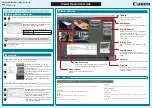
Table 3-4
Computer Setup—Security (continued)
System Security
(these options are
hardware dependent)
Data Execution Prevention (enable/disable) - Helps prevent operating system security breaches.
Default is enabled.
SVM CPU Virtualization (enable/disable). Controls the virtualization features of the processor.
Changing this setting requires turning the computer off and then back on. Default is disabled.
Virtualization Technology (VTx) (enable/disable) - Controls the virtualization features of the
processor. Changing this setting requires turning the computer off and then back on. Default is
disabled.
Virtualization Technology Directed I/O (VTd) (enable/disable) - Controls virtualization DMA
remapping features of the chipset. Changing this setting requires turning the computer off and
then back on. Default is disabled.
Trusted Execution Technology (enable/disable) - Controls the underlying processor and chipset
features needed to support a virtual appliance. Changing this setting requires turning the
computer off and then back on. Default is disabled. To enable this feature you must enable the
following features:
●
Embedded Security Device Support
●
Virtualization Technology
●
Virtualization Technology Directed I/O
Embedded Security Device (enable/disable) - Permits activation and deactivation of the
Embedded Security Device.
NOTE:
To configure the Embedded Security Device, a Setup password must be set.
●
Reset to Factory Settings (Do not reset/Reset) - Resetting to factory defaults will erase all
security keys and leave the device in a disabled state. Changing this setting requires that
you restart the computer. Default is Do not reset.
CAUTION:
The embedded security device is a critical component of many security
schemes. Erasing the security keys will prevent access to data protected by the Embedded
Security Device. Choosing Reset to Factory Settings may result in significant data loss.
●
Measure boot variables/devices to PCR1 - Typically, the computer measures the boot path
and saves collected metrics to PCR5 (a register in the Embedded Security Device). Bitlocker
tracks changes to any of these metrics, and forces the user to re-authenticate if it detects
any changes. Enabling this feature lets you set Bitlocker to ignore detected changes to boot
path metrics, thereby avoiding re-authentication issues associated with USB keys inserted in
a port. Default is enabled.
System Security
(continued)
OS management of Embedded Security Device (enable/disable) - This option allows the user to
limit OS control of the Embedded Security Device. Default is enabled. This option is automatically
disabled if Trusted Execution Technology is enabled.
●
Reset of Embedded Security Device through OS (enable/disable) - This option allows the
user to limit the operating system ability to request a Reset to Factory Settings of the
Embedded Security Device. Default is disabled.
NOTE:
To enable this option, a Setup password must be set.
●
No PPI provisioning (Windows 8 only) - This option lets you set Windows 8 to bypass the PPI
(Physical Presence Interface) requirement and directly enable and take ownership of the
TPM on first boot. You cannot change this setting after TPM is owned/initialized, unless the
TPM is reset. Default is disabled for non-Windows 8 systems, and enabled for Windows 8.
●
Allow PPI policy to be changed by OS. Enabling this option allows the operating system to
execute TPM operations without Physical Presence Interface. Default is disabled.
NOTE:
To enable this option, a Setup password must be set.
16
Chapter 3 Computer Setup (F10) Utility
Содержание Pro 3330
Страница 4: ...iv About This Book ...
Страница 10: ...x ...
Страница 87: ...3 Locate hard disk drive in the computer Figure 7 29 Hard drive location Drives 77 ...
Страница 226: ...W Wake on LAN feature 168 Windows 8 operating system DVD 192 216 Index ...
















































